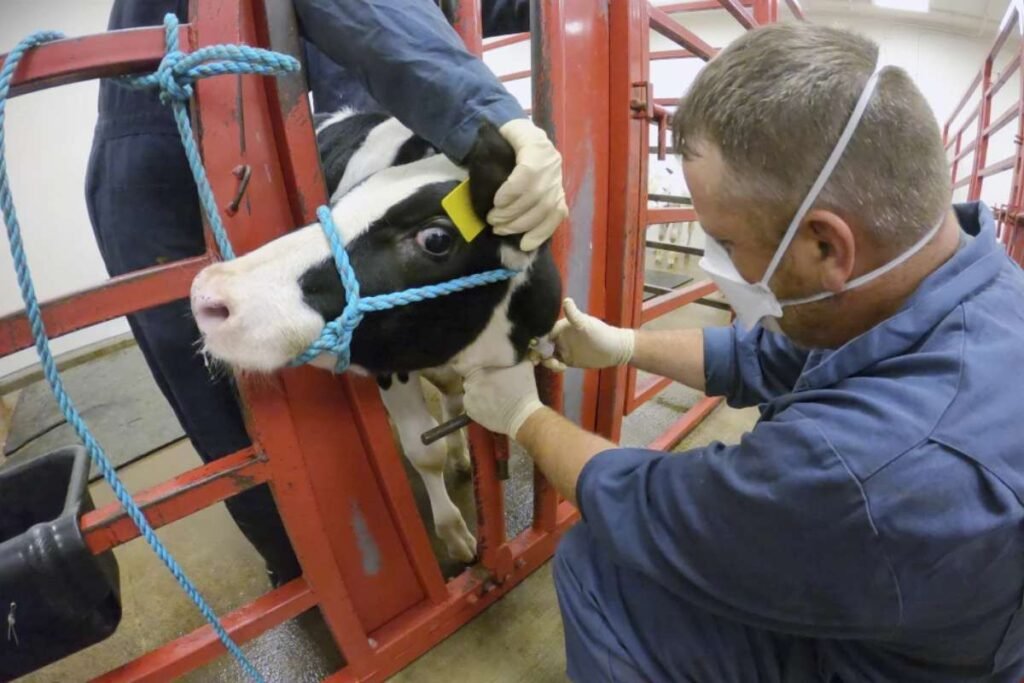Recent research has confirmed that cases of the highly pathogenic H5N1 bird flu have been occurring undetected in humans in the United States. Blood samples collected from 115 US Dairy Industry workers in Michigan and Colorado between June and August 2024 revealed that 7 percent had antibodies to the virus, indicating prior exposure.
US Dairy Industry Mild Symptoms Observed in Most Cases
Encouragingly, the majority of those infected with the virus did not suffer severe illness. Half of the workers with virus antibodies in their blood reported no symptoms, while others experienced only mild issues such as fever, sore throat, congested nose, sneezing, diarrhea, headaches, or red, itchy eyes. This suggests that most infections in humans so far have been relatively mild.
Concerns Over Mutation and Public Health Risks
Despite the low current risk to public health, researchers remain concerned about the virus’s potential to mutate into more dangerous strains. In Cambodia, at least three patients have died from a hybrid strain of bird flu that combines two variants, showing mutations that may assist airborne transmission and increase the infection risk in mammals.
A new case in Canada has also raised alarms. A teenager is critically ill in the hospital with a mutated version of the strain found in the U.S. dairy cow outbreak. Genetic sequencing indicates a change in the virus that could enhance its ability to infect humans. Although this case appears isolated, it underscores the need for ongoing surveillance and outbreak management.
Human-to-Human Transmission Under Scrutiny
So far, there is only one documented case of bird flu without an identified animal origin, sparking fears that human-to-human transmission might be possible. Close tracking of the virus remains essential to prevent any further spread.
Occupational Risks for Dairy Workers
The US Dairy Industry workers who tested positive for antibodies had all been involved in milking cows or cleaning milking parlors. None of these individuals reported using personal protective equipment (PPE) recommended for working with infected animals. Use of PPE among all workers was reportedly low, highlighting a significant gap in infection prevention measures.
The CDC has emphasized the importance of outreach to employers and workers about the risks of infection and the critical role of PPE in reducing exposure. Many of the affected workers are Spanish speakers, requiring culturally appropriate outreach efforts to improve safety compliance.
Broader Impact on Animals and Efforts to Contain the Virus
Since 2022, the highly virulent H5N1 bird flu has led to the culling of over 90 million domestic birds in the U.S. Poultry outbreaks continue to be widespread, with infections reported in more than 400 dairy herds across 48 states. Signs of infection in animals include drowsiness, lack of coordination, head tilts, and difficulty standing or flying.
Efforts are underway to mitigate the virus’s impact on wildlife and endangered species. In California, a vaccination program has been launched for critically endangered condors, and researchers are working to develop a human vaccine to combat potential outbreaks.
Global and Public Health Recommendations
Authorities are urging individuals worldwide to maintain proper hygiene when handling animals and to report any sightings of multiple sick or dead birds. Hotlines are available in the U.S., UK, and Australia to facilitate reporting.
The CDC continues to monitor the situation closely, stressing the importance of robust tracking and improved management of outbreaks in animals. This vigilance is critical to preventing the virus from evolving into more virulent forms that could pose greater risks to humans.









